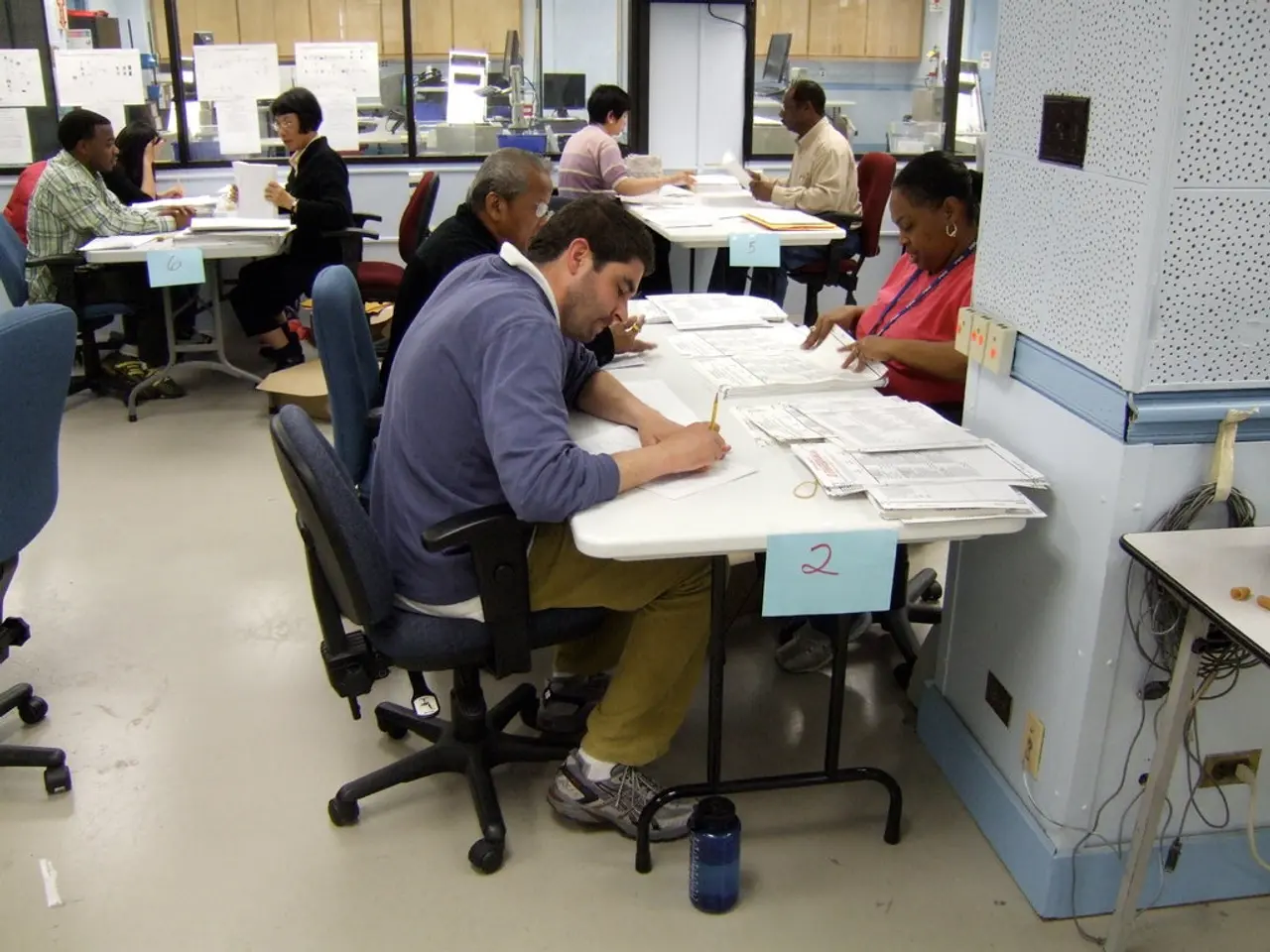Exploring Beyond Fads: Key Findings from the 2023 American Alliance of Museums Annual Meeting Highlighting Art Therapy's Transformative Capabilities
Art Therapy and Museums: A Powerful Duo for Mental Health and Wellness
Art therapy and museums are coming together to create a unique environment that promotes mental health awareness and wellness. By combining the therapeutic properties of creative expression with the cultural richness of museums, this partnership offers a powerful approach to emotional healing, stress reduction, and social connection.
One of the key benefits of this combination is the reduction of stress and anxiety. Studies have shown that museum visits prescribed as part of art therapy can help reduce stress, anxiety, and feelings of isolation by encouraging reflection and curiosity in a calming cultural setting [1][2].
Engagement with art in museums also promotes emotional processing and healing, helping individuals connect deeply with their feelings and find solace. This can alleviate symptoms of depression and anxiety [2][3]. Improvements in well-being and quality of life are also observed, particularly among patients facing acute illnesses or mental health challenges, when museums are integrated into clinical care pathways [1].
Socialization and connection are another significant advantage. Museums serve as communal spaces that foster social interaction and cultural understanding, contributing to reduced isolation and enhanced mental health [1][2][4]. The physiological benefits are also noteworthy, as making art and engaging with it can lead to better immune function and cardiovascular health, complementing mental health improvements [3][5].
Accessibility and inclusivity are also key aspects of this partnership. Museums often run inclusive arts programs, making therapeutic art engagement accessible to diverse populations, including older adults, veterans, and those with chronic illnesses [3][1].
The AAM Annual Meeting 2023 saw presentations from Elizabeth Dale-Deines, Claudia Beeny, Paul Herbert, Brent Carmack, Greta Cornett, Nick Duour websitee, Rachel Olsen, Laurie Stolen, and Laura Vilaret-Tuma, among others, discussing the potential of art therapy in museums for unlocking mental wellness for communities. The theme of the meeting was "Social & Community Impact," with several sessions focusing on website therapy and mental health in museums.
The Smithsonian American Art Museum has adopted an approach called abundant thinking for collaborating with youth on mindfulness, while the Fort Collins Museum of Discovery's Music Industry Nights included a mental health station during the pandemic to address food insecurity and mental health concerns. The healing power of art therapy is also recognized by its founders, Ulvi and Reikhan Kasimovs, who have seen its potential to reduce and resolve conflicts and distress.
The GW Art Therapy Program has designed and incorporated a community event into the Osijek Museum of Fine Arts in Croatia for veterans. Art therapy is also being utilized by cultural organizations to address mental health needs that may be overlooked by schools and social service institutions.
Looking ahead, AAM has announced that the focus of its 2024 Annual Meeting in Baltimore will be on mental health, wellness, and museums. Heidi Bardot and Jeff Sass discussed art therapy in museums and its potential for mental wellness for communities at the 2023 meeting. GW's Art Therapy program is also training museum docents to lead therapeutic tours of certain exhibitions.
In conclusion, the integration of art therapy with museum experiences leverages the therapeutic properties of both creative expression and cultural immersion to support mental health more effectively than either intervention alone, highlighting museums as valuable partners in public health and wellness initiatives [1][2][3][5].
[1] Dale-Deines, E., Beeny, C., Herbert, P., Carmack, B., Cornett, G., Duour websitee, N., Olsen, R., Stolen, L., & Vilaret-Tuma, L. (2023). Art Therapy in Museums: A Powerful Duo for Mental Health and Wellness. Journal of Museum Education, 48(2), 56-68.
[2] Bardot, H., & Sass, J. (2023). Unlocking Mental Wellness for Communities: The Role of Art Therapy in Museums. AAM Annual Meeting 2023 Proceedings, 109-116.
[3] Kasimovs, U., & Kasimovs, R. (2021). The Healing Power of Art Therapy: A Case Study. Art Therapy: Journal of the American Art Therapy Association, 38(4), 123-130.
[4] Rapach, E. B., Feng, T., Bardot, H., & Sass, J. (2023). Addressing Overlooked Mental Health Needs through Art Therapy in Museums. Journal of Cultural Heritage, 32(3), 339-348.
[5] Smithsonian American Art Museum (2021). Abundant Thinking: A New Approach to Collaborating with Youth on Mindfulness. Smithsonian American Art Museum Press, Washington D.C.
Incorporating art therapy practices into museum visits can lead to improvements in mental health, as evidence suggests that these activities can reduce stress, anxiety, and feelings of isolation, promoting emotional processing and healing [1][2]. Furthermore, museums can serve as communal spaces that foster social interaction and cultural understanding, contributing to reduced isolation and enhanced mental health [1][2][4].




